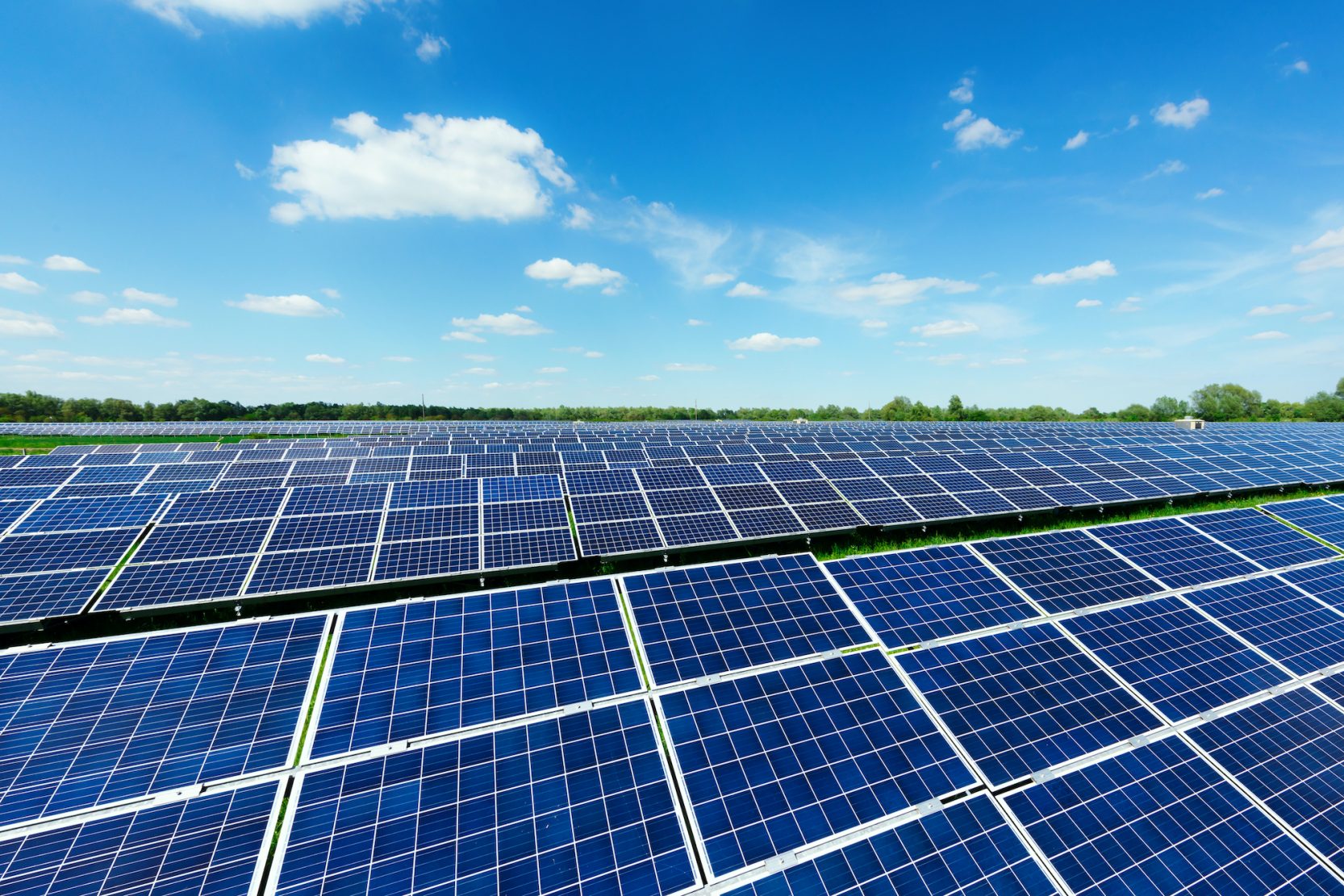Turkey Updates National Strategy to Combat Climate Change
تركيا تعمل على تحديث استراتيجية وطنية لمكافحة التغيير المناخي
QNA
Ankara: Turkey is updating a national climate change strategy and action plan with the aim of shaping the roadmap in combating climate change in line with the 2030 and 2050 goals.
In this context, Turkish President Recep Tayyip Erdogan stressed in his introduction to the book “Turkiye’s Green Development Initiative” prepared by the Turkish Presidency’s Directorate of Communications that his country seeks to play an effective role in solving the climate crisis by placing the “Green Development Revolution” at the center of all its activities.
Stating that the natural disasters experienced in recent years have demonstrated that countries that disregarded green development principles endanger not only themselves but also the whole humanity, President Erdogan underlined the need for a new roadmap that cherishes and prioritises the environment over economic gain.
“We have not strayed away from our sustainable development goals, which include ensuring equitable income distribution, increasing employment, and supporting disadvantaged segments of society while steering the Turkish economy to the highest growth rates in its history. Furthermore, we have made remarkable progress in areas such as renewable energy, waste management, and forest expansion,” Erdogan said.
The Turkish president continued “As a result of the ‘Zero Waste’ project, the most significant step we have taken in waste management, we have embarked on a new era in terms of environmental protection and recycling awareness among our citizens.
Through Parliament’s ratification of the Paris Agreement for climate change last October, “we effectively crowned all the environmental projects we have undertaken over the last 19 years,” he said, explaining that Turkey has committed to achieving net-zero emission by 2053 as part of the Paris Agreement.
In the same context, the Turkish Ministry of Trade intends to prepare an action plan on combating climate change in the country, which will be revealed in the last quarter of this year, in line with Turkey’s goals in combating climate change, as it is expected to be among the countries most affected by climate change due to its geographical location.
In the plan, the ministry will support the transition to a sustainable, effective, and green economy in line with Turkey’s development goals, stressing that environmental issues such as pollution, climate change, desertification, deforestation, loss of biodiversity, drought and floods affect human life and the development process day after day. Turkey will continue to make efforts to reduce emissions and adapt to climate change in parallel with its position as a developing country that seeks to develop various facilities for trade and economy.
Turkey attaches importance to combating climate change and all the challenges arising from it, and contributes effectively to the fight against climate change at the bilateral and global levels.
In line with this goal, Turkey’s plan to combat climate change will be prepared in the fourth quarter of this year. Accordingly, the Climate Change Action Plan 2023-2030 and the Climate Change Strategy 2050 will be ready in the fourth quarter of 2022. Research and development projects will also be implemented to identify the effects of climate change on biodiversity and ecosystems through desertification, deteriorating agricultural land productivity, and ensuring that the potential loss of coastal and fresh waters as a result of climate change is identified.
The plan to combat climate change will include means to compensate for damaged agricultural lands through national investment programs, whereby a decision support mechanism will be developed, objectives will be updated, and the planning and implementation mechanism will be accelerated in areas with a high rate of deterioration.
The plan will contribute to increasing carbon stocks, implementing environmental research activities, providing training in sustainable agricultural techniques, implementing research and development projects, and disseminating positive practices in this regard.
Over the past 18 years, Turkey has also increased the area of its forests from 20.8 million hectares to 23 million hectares, and launched the “zero waste” project in 2017, with the aim of reducing the volume of non-recyclable waste and greenhouse gas emissions, as it sees that through the “zero waste” project the rate of waste recycling will increase to 60 percent by 2035.
Turkey said that the total amount of greenhouse gas emissions that will be reduced by Turkey between 2012 and 2030 will amount to one billion and 920 million tons. It also expects a decrease in greenhouse gas emissions by up to 21 percent by 2030, according to the national contribution statement it submitted in 2015.
Turkey is a leading country in the region in the field of renewable energy, as the share of renewable energy sources in electricity is 52.3 percent, making it ranked 6th in Europe and 13th globally. It also ranked second in Europe and 9th globally in terms of hydropower.
Turkey submitted the Nationally Determined Contributions (NDCs) targets to the UN Intergovernmental Panel on Climate Change (IPCC) in 2015, and in 2030 these targets will lead to an overall increase in emissions compared to 2010 per person. The target will also ensure an emissions rate of 10 tons per person in 2030. However, as of last year, the increase is expected to reach about 8 tons per person by 2030, and if appropriate policies are implemented for electricity supply, road transport and residential buildings, the decline will be possible.
Coal-fired power plants in Turkey released about 98 million tons of carbon dioxide in 2017, and operating according to the target capacity factor, the planned new units will add more than 61 million tons annually.
Coal in Turkey is one of the largest sources of greenhouse gases in the country, emitting more than one million tons of carbon dioxide per terawatt-hour from coal-fired power plants. By adding emissions from coal burning in industry and heating, and methane emissions from coal mining, about a third of Turkey’s emissions come from coal.
In 2017, more than 150 million tons of carbon dioxide was emitted as a result of coal combustion, but since 2016, methane emissions from coal mining have been the largest in Turkey’s total.
Although the government has guaranteed to purchase electricity from lignite-fired power plants until 2024 at an inflation-linked price, Turkey’s climate change policy includes an increase in economic activity linked to coal reserves. Since 2019, the government aims to maintain the level of coal reserves in the energy portfolio in the long term.
In this context, Murat Yilmaz, a Turkish expert in the field of energy, said in a statement to Qatar News Agency (QNA), that the Climate Change Conference (COP26) in Glasgow is the first summit that will review the progress achieved during the past period in terms of achieving the required goals since the signing of the Paris Climate Agreement in 2015.
He added that a number of initiatives are expected to be established during the conference aimed at meeting the difficult challenges of achieving zero emissions by the middle of this century with bolder and faster cuts to carbon emissions by 2030.
قنا
أنقرة: تعمل تركيا على تحديث استراتيجية وخطة عمل وطنية بخصوص تغير المناخ بهدف تشكيل خارطة الطريق في مكافحة تغير المناخ بما يتماشى مع أهداف 2030 و2050.
وفي هذا السياق، شدد الرئيس التركي رجب طيب أردوغان في المقدمة التي كتبها لكتاب /ثورة التنمية الخضراء لتركيا/ المعد من قبل دائرة الاتصال في الرئاسة التركية أن بلاده تسعى للعب دور فعال في حل أزمة المناخ من خلال وضع /ثورة التنمية الخضراء/ في مركز جميع أنشطتها.. لافتا إلى أن الكوارث الطبيعية التي وقعت في السنوات الأخيرة أظهرت أن الدول التي تتجاهل مبادئ التنمية الخضراء قد أضرت بنفسها وبالبشرية جمعاء مؤكدا أنه في المرحلة الحالية هناك حاجة إلى خارطة طريق جديدة تضع البيئة في المركز وتوليها قيمة بدل المكاسب الاقتصادية.
وأضاف بينما وصلت تركيا إلى أعلى أرقام للنمو في تاريخها لم تبتعد عن أهداف التنمية المستدامة مثل إقامة العدل وزيادة فرص العمل ودعم الفئات المحرومة في المجتمع بالإضافة إلى ذلك أحرزنا تقدما كبيرا في مسائل مثل الطاقة المتجددة وإدارة النفايات وخاصة زيادة مناطق الغابات.
وتابع الرئيس التركي: عبر مشروعنا /صفر نفايات/ الذي يعتبر أهم خطوة اتخذناها في إدارة النفايات دخلنا مرحلة جديدة سواء في حماية البيئة أو زيادة الوعي بإعادة التدوير بين مواطنينا، ومن خلال مصادقة البرلمان على اتفاقية باريس للمناخ في شهر اكتوبر الماضي نكون قد توجنا جميع المشاريع البيئية التي نفذناها في السنوات الـ 19 الماضية”.. موضحا أن تركيا ملتزمة بالعام 2053 باعتباره /التاريخ الذي ستخفض فيه الانبعاثات إلى الصفر/ في إطار عملية الموائمة مع اتفاق باريس .
وفي السياق ذاته، تعتزم وزارة التجارة التركية إعداد خطة عمل حول مكافحة تغير المناخ في البلاد سيكشف عنها في الربع الأخير من العام الجاري تماشيا مع أهداف تركيا في مكافحة التغير المناخي حيث يتوقع أن تكون تركيا بين الدول الأكثر تأثرا بالتغير المناخي بسبب موقعها الجغرافي.
وستعمل الوزارة في الخطة على دعم الانتقال إلى اقتصاد مستدام وفعال وأخضر بما يتماشى مع أهداف التنمية في تركيا.. مؤكدة على أن المشكلات البيئية مثل التلوث وتغير المناخ والتصحر وإزالة الغابات وفقدان التنوع البيولوجي والجفاف والفيضانات تؤثر على حياة الإنسان وعملية التنمية يوما بعد يوم.. وستواصل تركيا بذل الجهود للحد من الانبعاثات والتكيف مع تغير المناخ بالتوازي مع مكانتها كدولة نامية تسعى لتطوير مختلف مرافق التجارة والاقتصاد.
وتعلق تركيا أهمية على مكافحة تغير المناخ وجميع التحديات الناشئة عنه، والمساهمة بشكل فعال في جهود المكافحة ع
لى الصعيدين الثنائي والعالمي.
وتماشيا مع هذا الهدف سيتم إعداد /خطة تركيا حول مكافحة تغير المناخ/ في الربع الأخير من العام الجاري. وبناء عليه ستكون /خطة العمل لتغير المناخ 2023-2030/ و/استراتيجية تغير المناخ 2050/ جاهزتين في الربع الأخير من عام 2022. كما سيتم تنفيذ مشاريع البحث والتطوير لتحديد آثار تغير المناخ على التنوع البيولوجي والنظم البيئية من خلال التصحر وتدهور إنتاجية الأراضي الزراعية والتأكد من تحديد الخسارة المحتملة للمياه الساحلية والمياه العذبة نتيجة لتغير المناخ.
وستتضمن خطة مكافحة تغير المناخ وسائل لتعويض الأراضي الزراعية المتضررة من خلال البرامج الوطنية للاستثمار حيث سيتم تطوير آلية دعم القرار وتحديث الأهداف وتسريع آلية التخطيط والتنفيذ في المناطق التي ترتفع فيها نسبة التدهور.
وسوف تساهم الخطة في زيادة مخزونات الكربون وتنفيذ أنشطة بحثية بيئية، وتوفير التدريب على التقنيات الزراعية المستدامة، وتنفيذ مشاريع بحث وتطوير ونشر ممارسات إيجابية في هذا الصدد.
كما قامت تركيا خلال السنوات الـ 18 الماضية بزيادة مساحة غاباتها الحرجية من 20.8 مليون هكتار إلى 23 مليون هكتار، وأطلقت مشروع /صفر نفايات/ عام 2017 بهدف خفض حجم النفايات غير القابلة لإعادة التدوير وتقليل انبعاثات غازات الاحتباس الحراري، حيث ترى أنه عبر مشروع /صفر نفايات/ ستزيد معدل إعادة تدوير النفايات إلى 60 بالمئة بحلول 2035.
وبينت تركيا أن “إجمالي ما سيتم تقليله من انبعاث غازات الاحتباس الحراري من جانب تركيا بين عامي 2012 و2030 سيبلغ مليارا و920 مليون طن”.. كما تتوقع انخفاض انبعاثات غازات الاحتباس الحراري بنسبة تصل إلى 21 بالمئة بحلول عام 2030 ، بموجب بيان المساهمة الوطنية الذي قدمته عام 2015.
وتعتبر تركيا دولة رائدة في المنطقة بمجال الطاقة المتجددة، حيث تبلغ حصة مصادر الطاقة المتجددة من الكهرباء 52.3 بالمئة ما يجعلها تحتل المرتبة 6 أوروبيا و13 عالميا. كما تبوأت المركز الثاني أوروبيا والتاسع عالميا فيما يخص الطاقة الكهرومائية.
وقدمت تركيا أهداف المساهمات الوطنية المحددة المقررة إلى هيئة الأمم المتحدة المعنية بتغير المناخ عام 2015، وستؤدي هذه الأهداف سنة 2030 إلى زيادة إجمالية في الانبعاثات مقارنة بعام 2010 وفقا لمقدار الفرد الواحد، فإن الهدف سيضمن أيضا معدل الانبعاثات الذي يبلغ 10 أطنان للفرد الواحد عام 2030. ومع ذلك اعتبارا من العام الماضي يتوقع أن تبلغ الزيادة نحو 8 أطنان للفرد الواحد بحلول 2030. ومع ذلك فإذا نفذت سياسات مناسبة لإمدادات الكهرباء والنقل البري والمباني السكنية فإن الانخفاض سيكون ممكنا.
وأطلقت محطات توليد الطاقة التي تعمل بالفحم في تركيا نحو 98 مليون طن من غاز ثاني أكسيد الكربون عام 2017 ، وبالتشغيل حسب عامل القدرة المستهدفة ستضيف الوحدات الجديدة المخطط لها أكثر من 61 مليون طن سنويا.
ويعد الفحم في تركيا من أكبر مصادر الغازات الدفيئة في البلاد ينبعث أكثر من مليون طن من ثاني أكسيد الكربون لكل تيرا واط في الساعة من محطات الطاقة العاملة بالفحم. وبإضافة الانبعاثات الناتجة من الفحم المحترق في الصناعة والتدفئة، وانبعاثات الميثان الناتجة من تعدين الفحم، فإن نحو ثلث انبعاثات تركيا تأتي من الفحم.
وفي عام 2017، انبعث أكثر من 150 مليون طن من غاز ثاني أكسيد الكربون نتيجة احتراق الفحم، لكن منذ عام 2016، كانت انبعاثات الميثان الناتجة من تعدين الفحم هي الأكبر ضمن إجمالي الانبعاثات التركية.
وعلى الرغم من ضمان الحكومة شراء الكهرباء من محطات توليد الطاقة العاملة بفحم الليجنيت حتى عام 2024 بسعر مرتبط بالتضخم، تتضمن سياسة تركيا المهتمة بتغير المناخ زيادة في النشاط الاقتصادي المرتبط باحتياطيات الفحم. ومنذ 2019، تهدف الحكومة إلى الحفاظ على مستوى احتياطي الفحم في محفظة الطاقة على المدى الطويل.
وفي هذا الإطار، ذكر السيد مراد يلماز الخبير التركي في مجال الطاقة في تصريح لوكالة الأنباء القطرية /قنا/، أن قمة تغير المناخ في غلاسكو تعتبر أول قمة ستراجع مدى التقدم الذي تحقق خلال الفترة الماضية فيما يتعلق بتحقيق الأهداف المطلوبة منذ توقيع اتفاقية باريس للمناخ في عام 2015.
وأضاف: “من المتوقع خلال القمة تأسيس عدد من المبادرات التي تهدف إلى مواجهة التحديات الصعبة المتعلقة بالوصول إلى مستوى انبعاثات صفري بحلول منتصف هذا القرن مع تخفيضات أكثر جرأة وأسرع لانبعاثات غاز الكربون بحلول عام 2030”.




